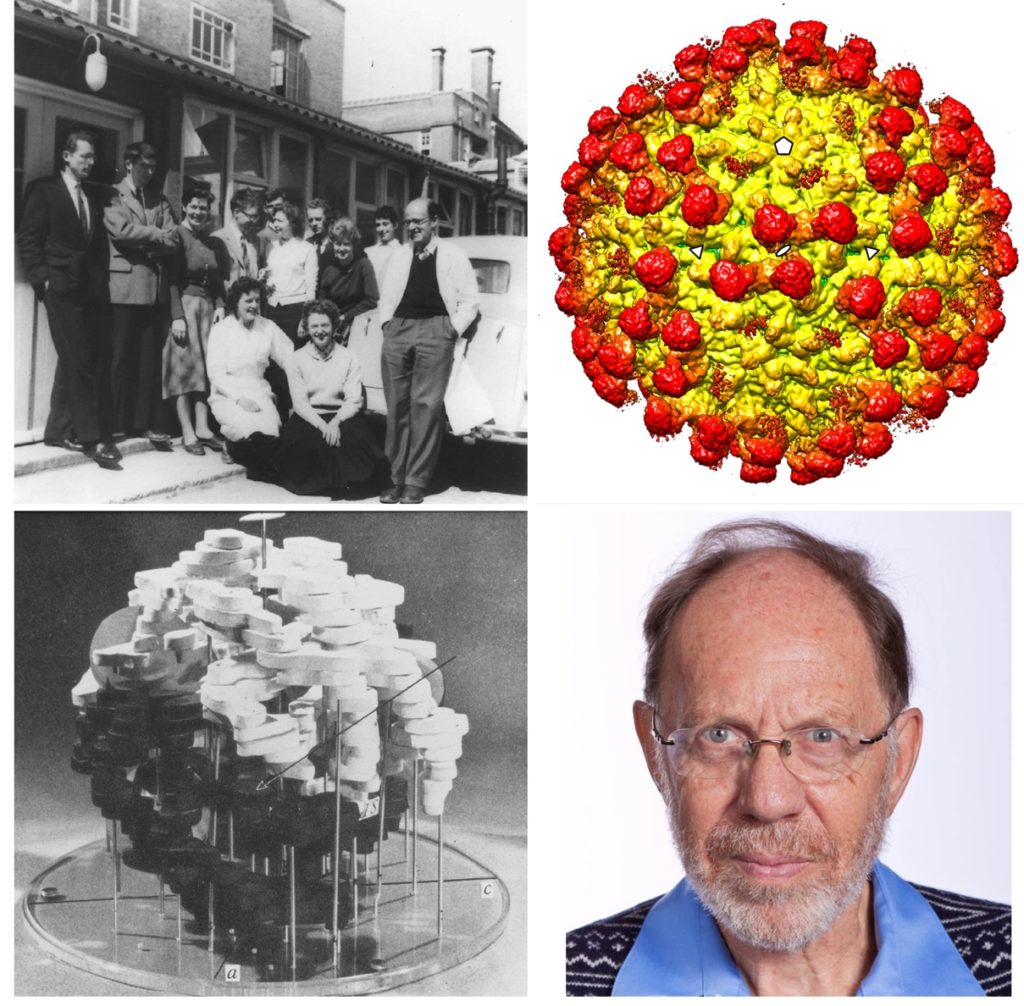In 2018 the conference’s keynote lecture – the traditional HEC lecture given by an internationally renowned scientist – will be given by Michael G. Rossmann, Purdue University, West Lafayette, U.S.A. Among other things, Michael is a first-hand witness to the birth of protein structure determination, a pioneer in the structural analysis of viruses for the development of antiviral pharmaceuticals, and an early advocate for combining crystallography and electron microscopy to access otherwise intractable macromolecular complexes.
It’s a great pleasure and honour to welcome Michael at HEC21 in Quedlinburg!
A personal history of structural virology from haemoglobin to Zika virus
As an undergraduate (1948-52) I studied physics and mathematics at the Regents Street Polytechnic in London, UK. I then became a graduate student (1952-56) in the laboratory of Prof. J. Monteath Robertson at the University of Glasgow, in Scotland. There I learned the basics of crystallography and solved the structures of three aromatic hydrocarbons in order to study the variation of bond lengths with bond order. Subsequently I became a post-doc in Prof Bill Lipscomb’s laboratory at the University of Minnesota, Minneapolis USA (1956-58). There I had the opportunity to learn how to program one of the first commercial computers, the UNIVAC 1103. Wanting to find greater computational challenges, I obtained a second post-doctoral position with Max Perutz in Cambridge, UK (1958-64), who was studying the structure of haemoglobin. By the end of my first year in Cambridge we had been able to determine the structure of haemoglobin (MW 68kDa) at 5.5Å resolution. The haemoglobin work, with the presence of similar folds for the alpha and beta polypeptide chains, gave me the basic ideas for what is now known as the molecular replacement method.
In 1964 I moved to Purdue University in Lafayette, Indiana to start my own laboratory. Because of the high symmetry predicted by Watson and Crick for spherical viruses I wanted to use the techniques I had developed for molecular replacement to study viruses. However, the idea of determining the structure of viruses at near atomic resolution was not considered a viable project at that time. Therefore I studied a series of enzymes (dehydrogenases) that had some of the symmetry properties of a virus. This led to the concept of structural domains in proteins and the conservation of a nucleotide binding fold as perhaps the most ancient conserved protein structure.
With the success of the enzyme studies I felt ready to start working on viruses in 1973, resulting in the structure of a plant RNA virus in 1980 and the first animal virus structure, namely human rhino (common cold) virus in 1985. In collaboration with Richard Kuhn, a virologist, I turned my attention to the more complex lipid envelope containing viruses such as alphaviruses and then flaviviruses (2002) such as dengue, yellow fever and West Nile. In 2016 we determined the first structure of Zika virus, another flavivirus.
Initially we combined the use of electron microscopy to determine the structure of whole viruses at low resolution (e.g. 20Å) with the crystallographic structure of viral components at atomic (e.g. 2Å) resolution. However, since about 2016 we have benefited from the development of direct electron detectors for electron microscopes, so that now it is possible to determine the structure of viruses at atomic resolution entirely with an electron microscope alone. As we have gained experience in determining virus structures we have increased the variety of viruses studied to include also very large dsDNA viruses like PBCV1 and Mimi viruses as well as bacterial viruses such as T4 and phiX174.

